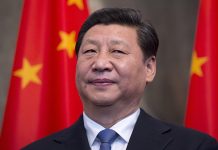Beijing: It was 90 years ago when Winston Churchill thought it was absurd to grow a chicken but eat only parts of it. In an essay titled Fifty Years Hence he published in 1931, he envisioned the meat people would eat in the future.
“We shall escape the absurdity of growing a whole chicken in order to eat the breast or wing, by growing these parts separately under a suitable medium,” he wrote in the essay. The lab-grown meat that Churchill imagined in the essay didn’t appear until the 2010s, decades later than he assumed. In 2013, the first lab-grown hamburger patty was developed successfully and fried up in the Netherlands. The hissing sound from the frying pan kicked open the door of the synthetic meat world.
Scientists from other countries followed suit. In December 2019, a team of Chinese scientists produced 5 grams of meat cultured from animal muscle stem cells. The reason for the birth of lab-grown meat is not to avoid wasting the “inedible parts” of the bird, like Churchill thought, but the fact that the meat produced on Earth can hardly feed its population.
According to a report released by the United Nations in 2019, the world’s population is expected to increase to 8.5 billion in 2030, and further to 9.7 billion by 2050. It is estimated that the world’s meat production in 2019 was about 335 million tons, and the consumption was about 333 million tons.
– The Daily Mail-Beijing Review News exchange item





